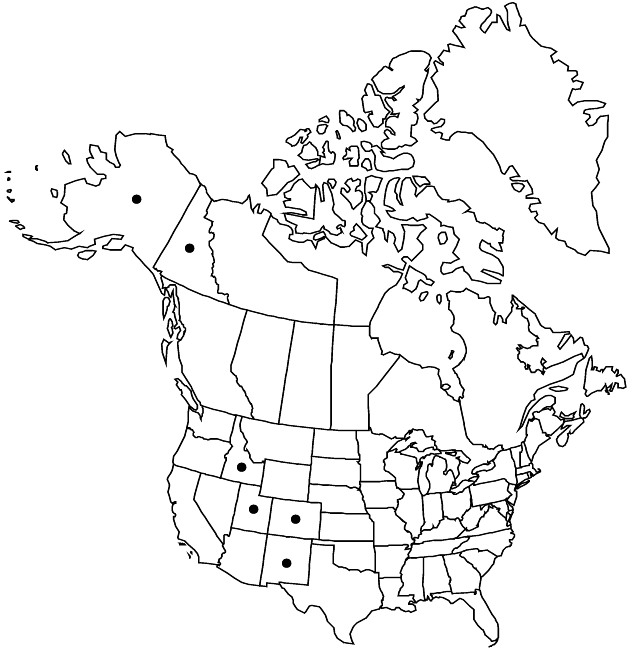Artemisia laciniata
Sp. Pl. 3: 1843. 1803.
Perennials, 5–15 cm (not cespitose), sometimes mildly aromatic. Stems 1–3, erect, reddish brown, simple, strigillose to spreading-hairy, or glabrous. Leaves basal (in rosettes, petioles to 12 cm) and cauline, greenish; blades (basal) 2–3-pinnate, relatively deeply lobed (cauline sessile, 1–2-pinnately lobed to entire), faces sparsely hairy to pilose. Heads (10–70, spreading to nodding, peduncles 0 or to 10 mm) in spiciform arrays 2–5 × 0.5–1 or 8–18 × 1–4 cm. Involucres globose, 3–5 × 4–8 mm. Phyllaries (greenish or yellowish) elliptic (margins hyaline, brownish), glabrous or sparsely hairy. Florets: pistillate 6–8; bisexual 20–50; corollas yellowish or yellow to reddish-tinged, 1–2 mm, hairy (hairs tangled). Cypselae oblong, 0.5–1 mm, glabrous.
Distribution

Yukon, Alaska, Colo., Idaho, N.Mex., Utah, Eurasia.
Discussion
Subspecies 2 (2 in the flora).
Selected References
None.
Key
| 1 | Stems hairy; leaves mostly cauline, blades 5–20 × 1–2 cm, sparsely hairy; arrays of heads 8–18 × 1–4 cm; corollas yellowish, 1–1.5 mm | Artemisia laciniata subsp. laciniata |
| 1 | Stems glabrous; leaves mostly basal, blades of proximalmost 4–8 × 0.5–1 cm, of cauline 1.5–0.8 × 0.2 cm, sericeous; arrays of heads 2–5 × 0.5–1 cm; corollas yellow or reddish-tinged, 1.5–2 mm | Artemisia laciniata subsp. parryi |